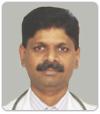Brief Answer:
You need a MRI scan of
Lumbar spine.
Detailed Answer:
Hi, thanks for writing to XXXXXXX
Based on your description and symptoms, I suspect that you have suffered a traumatic
intervertebral disc rupture in your lumbar spine that might be causing compression over the nerve roots producing the typical radicular symptoms (throbbing &
tingling sensation) down the leg.
These disc prolapses are not visualised in xrays and they are always normal. An MRI scan of the Lumbar spine is mandatory to diagnose the exact problem and its severity.
The initial management of a
lumbar disc prolapse is by conservative methods and includes the following -
- Usually 1-2 days of bed rest will calm
severe back pain. Do not stay off your feet for longer, though.
- Take rest breaks throughout the day, but avoid sitting for long periods of time.
- Avoid lifting heavy weights as it imparts more strain on your back
- Change your daily activities so that you avoid movements that can cause further pain, especially bending forward and lifting as it will worsen the
disc protrusion. if you want to bend forwards, do it with your hips and knees flexed
- Use a lumbosacral back support to stabilize your spinal muscles
- Use analgesics like advil or aleve and muscle relaxants to relieve pain and muscle spasm, as needed. Vitamin B12 supplements & Pregabalin may be helpful in controlling the
neuropathic pain.
- After the initial pain has subsided, remedial exercises to strengthen the spine are very important to restore normal spinal movements and muscle strength. The main aim of exercise is to encourage mobility, reduce muscle spasm, prevent further deterioration in the muscles and speed recovery.
If your symptoms are not improving with the above measures, consult an orthopedic surgeon for a detailed evaluation and further management.
Note: For further queries, consult a joint and bone specialist, an Orthopaedic surgeon.
Book a Call now.





